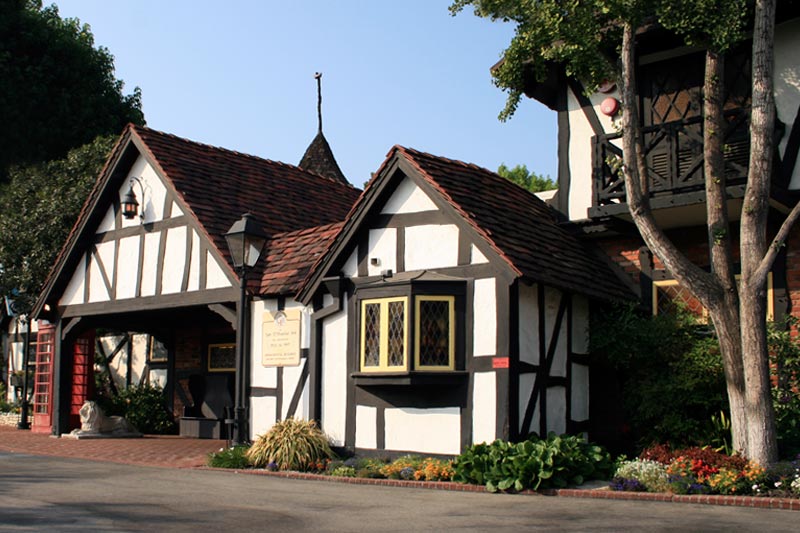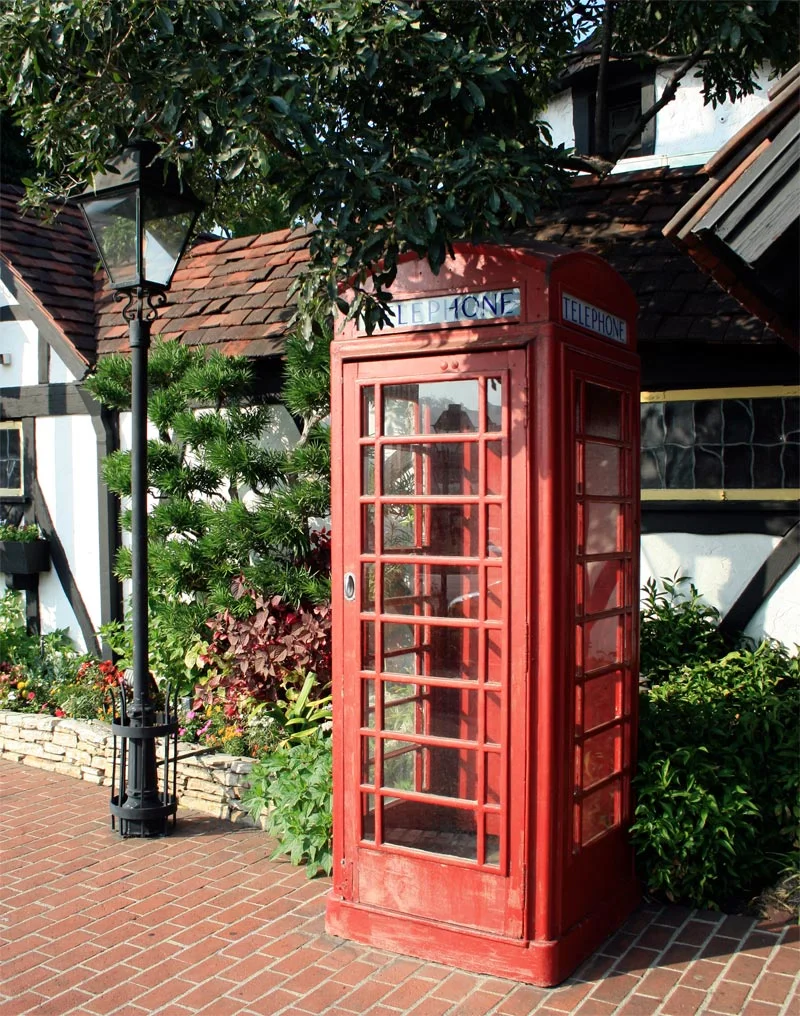My last stop in the Los Angeles area before heading home was The Tam O'Shanter Inn. This famous Scottish pub has the distinction of being Los Angeles' oldest restaurant operated by the same family in the same location.
I wasn't even aware of the significance of the place, thematically, until I read the short entry about it in Chris Nichols' fantastic book, The Leisure Architecture of Wayne McAllister. The subject of the book himself was a noteworthy early practitioner of thematic design, but The Tam O'Shanter was mentioned only in passing because McAllister was called in at some point to enlarge and remodel the restaurant.
What caught my eye reading about McAllister was a small, seemingly insignificant fact—The Tam O'Shanter was Walt Disney's favorite Los Angeles restaurant dating back to the earliest days of his animation studio.
Why would Walt like this one restaurant so much that his studio regularly donated art to hang on its walls? It was enough to intrigue me to stop by.
As it turns out, The Tam O'Shanter Inn has a long history, and it provides one of the earliest examples of twentieth century thematic design. The general manager was kind enough to allow me to take numerous photos photos of the interior, and provided me with a history write-up that they give to patrons. From the handout: "In June, 1922, Walter Van de Kamp and his son-in-law, Lawrence L. Frank partnered with restaurateur Joe Montgomery to co-found a quaint restaurant and roadside stop. Initially called 'Montgomery's Country Inn' the name was changed to The Tam O'Shanter in 1925."
There is a nice display cabinet in the entrance lobby to the restaurant, showcasing many old photographs and assorted memorabilia from over the years. The Tam O'Shanter name, incidentally, comes from The Poem by Robert Burns (1759–1796), widely considered to be the national poet of Scotland.
You would think, given the decor, that this place is just another pub-style restaurant and bar.
Typical exposed dark wood beams, white walls, large stuffy armchairs and heraldry crests fill the interior, giving it the proper "Old Englishness" of the British Isles.
Indeed, the requisite red public telephone booth stands outside.
Yet the most fascinating feature of "The Tam" is its creator. The initial design of the then-named Montgomery's Country Inn (before Wayne McAllister's remodel and expansion) was done by Harry Oliver, a humorist, artist, and academy award nominated art director of films from the 1920s and 1930s.
That's right—a Hollywood art director. Oliver never received formal training in architecture. He began his career in 1911 as a set painter and then later as a set dresser (having never even gone to art school; Oliver was a grade school dropout). His expertise, in the words of Cecil B. DeMille biographer Robert Birchard, was "atmospheric settings and controlled environments...one of Oliver's specialties was recreating really believable exterior locations." And in this, Oliver didn't even use a formal crew, preferring instead movie studio carpenters.
Despite having no formal training, Harry Oliver is credited as one of the major practitioners of Storybook Style, a fanciful cottage design in which angles are askew and window panes crooked. Structures he designed in this vein were the original Van de Kamp Bakery windmill (which became the chain's signature landmark), as well as famous Los Angeles residences such as the Spadena 'Witch' House.
It's hard to beat this description of The Tam's storybook style from The Leisure Architecture of Wayne McAllister: "...a series of undulating, lopsided, eaveless cupolas with a gnarled walking stick rising from the center. Stone and stucco with storybook shingle interiors were dark with heavy half timbers supporting medieval iron chandeliers."
The exterior of The Tam has been remodeled many times since, but the initial design seen in this picture from the 1930s shows the fairy-tale influence; tree trunk and branch columns, topsy-turvy roof lines, knotted wood, wrought iron flourishes and homely chimneys.
The original dining room (since remodeled) was fashioned by Oliver to echo Hansel and Gretel's "witch's house."
All the wood has a wonderfully weathered feeling, almost blackened. Owner Lawrence L. Frank, who hired Harry Oliver for the job, once explained that "every piece of wood which was used in [building The Tam] was thrown into fire first with the result that we never had to paint it and it got more beautiful as the years went by."
Today the overall motif would probably be associated with something like the Lord of the Rings films—a small country cottage for trolls. One of the few remaining original exterior features is the central cupola.
I can only wonder what Walt Disney thought as he dined here nearly every week during the 1930s, 40s and 50s. I'm guessing (no matter how good the food was) he found the environment positively narrative-rich. The Tam is a building straight out of the head of a motion pictures set designer, not a formally trained architect. This would be the exact approach Walt would employ when building his dream park—hiring film people like Harry Oliver.
Not limited only to fairy-tales, this early thematic designer was also fascinated by Spanish California and the Old Southwest. Oliver designed, directed and produced Gold Gulch, a 21-acre 1850s old west mining camp replica that was the largest concession at the 1935-1936 California Pacific International Exposition in San Diego. He even consulted on Knott's Berry Farm's original Ghost Town themed area, but it's rumored that Walter Knott dismissed his designs for being to fanciful and not a serious enough re-creation.
Harry Oliver's place in the lineage of thematic design can't be understated; he essentially introduced the coming overlap between cinema and architecture. This was an informal cross-pollination in which those accustomed to conceptualizing the temporary, fantasy worlds of film sets turned their talents towards constructing permanent, real-world environments.
The Tam O'Shanter Inn must have captured Walt Disney's imagination, because it embodies all the creative principles that he codified when he hired art directors from Twentieth Century Fox like Marvin Davis and Bill Martin to make his Disneyland vision of a unified, immersive thematic environment, a reality.
As such, The Tam is a historical landmark of thematic design.













